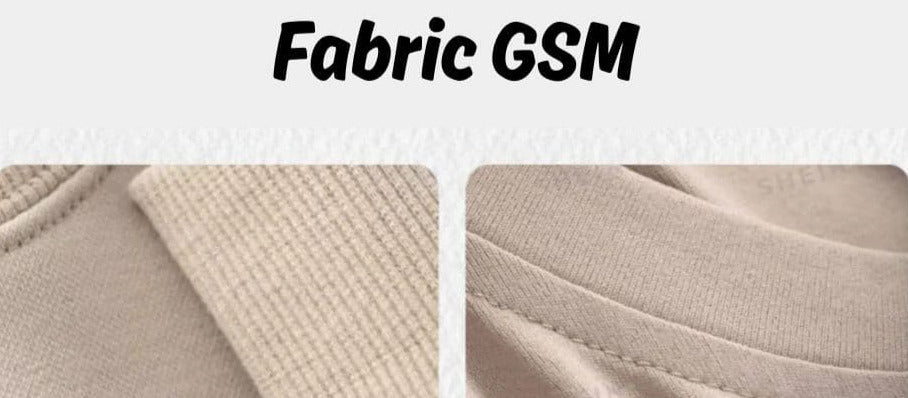30-Second Fabric Weight Guide: How GSM Defines Sportswear Quality
Ever noticed numbers like "180g" or "300g" on T-shirt or hoodie labels? Manufacturers prioritize confirming fabric weight during sampling—but what do these numbers actually mean? Let’s decode this critical clothing parameter in 30 seconds!
We’ll break this down into three sections:
1️⃣ What is fabric weight?
2️⃣ Does fabric weight = quality?
3️⃣ How to choose hoodies & T-shirts based on fabric weight.

How GSM Defines Sportswear Quality
🌟 What Is Fabric Weight?
Fabric weight measures how much a square meter of fabric weighs, expressed as g/m² (grams per square meter).
Higher GSM → Thicker, heavier fabric with better warmth.
Lower GSM → Lighter, more breathable for all-day comfort.
Example:
A "200g" T-shirt means its fabric weighs 200g per square meter.
⚠️ Key Note: Fabric weight ≠ quality!
GSM only measures thickness, not overall quality.
Prioritize material type (cotton, polyester blends) and garment cut for true comfort.

👔 T-Shirt GSM Guide
180-200 GSM
Pros: Ultra-breathable, ideal as a base layer for spring/fall or under lightweight summer outerwear.
Cons: Less structured, may cling when sweaty.
220-240 GSM
Pros: Perfect summer weight—breathable yet durable. Won’t turn transparent after a few washes.
Cons: Slightly warmer than lower GSM options.
250+ GSM
Pros: Heavyweight for cool weather; resists shrinking/wrinkling.
Cons: Too thick for hot climates. Sweat magnet!
Pro Tip: For daily wear, stick to 160-180 GSM—balanced comfort and longevity.

🧥 Hoodie GSM Guide
180-200 GSM
Spring/fall outerwear or layering piece. Feels like a "second skin."
220-240 GSM
Classic lightweight hoodie. Great for breezy spring mornings.
250-350 GSM
Midweight for crisp autumn days. Cozy without the bulk.
400+ GSM (Heavyweight Champ)
Winter armor! Ultra-warm but bulky—perfect for streetwear vibes.
Pro Tip: Opt for 320+ GSM hoodies in winter—warmth without looking like a marshmallow.

📌 Quick Recap
T-shirts: Lighter = breezier; heavier = sturdier.
Hoodies: Higher GSM = winter-ready; lower GSM = layering-friendly.
Always pair GSM with fabric type (e.g., cotton for breathability, fleece-lined for warmth).







Leave a comment
Your email address will not be published.